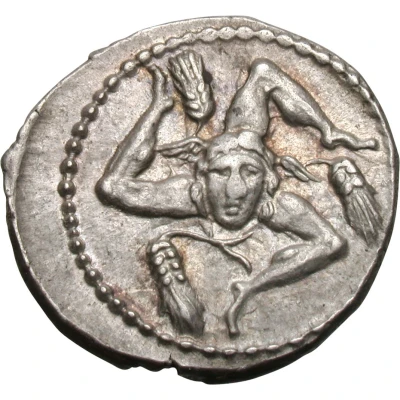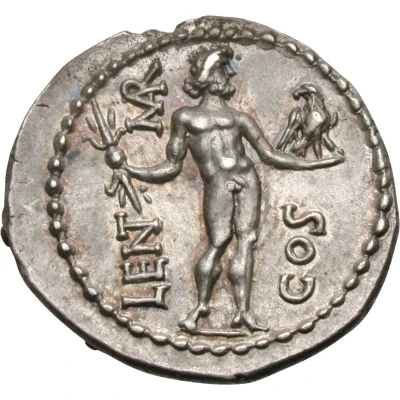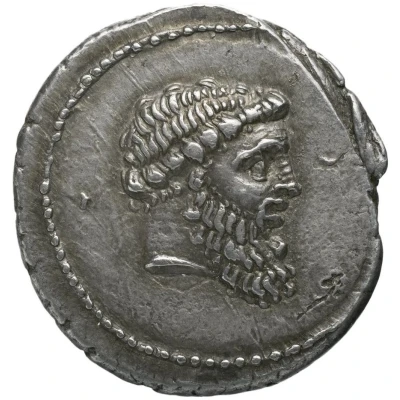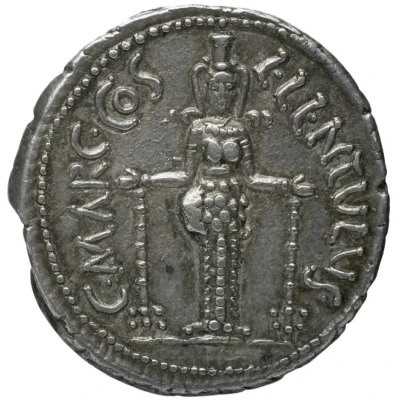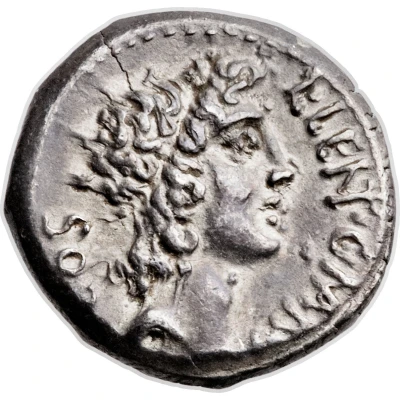
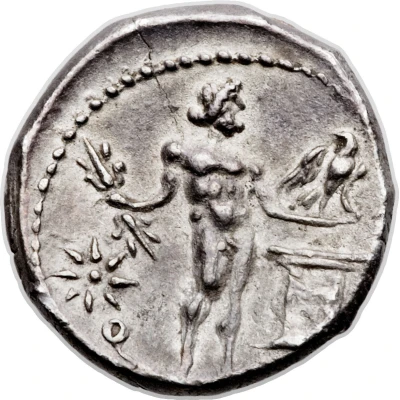

© Heritage Auctions
Denarius Cornelia: Lucius Cornelius Lentulus Crus; L•LENT•C•MARC COS / Q; Apollonia-Mordiaeum 49 BC
49 BC year| Silver | 3.99 g | 17 mm |
| Issuer | Rome › Roman Republic (509 BC - 27 BC) |
|---|---|
| Period | Republic (509 BC - 27 BC) |
| Type | Standard circulation coin |
| Year | 49 BC |
| Value | Denarius (1) |
| Currency | Denarius of 16 Asses (141 – 27 BC) |
| Composition | Silver |
| Weight | 3.99 g |
| Diameter | 17 mm |
| Shape | Round (irregular) |
| Technique | Hammered |
| Orientation | Variable alignment ↺ |
| Demonetized | Yes |
| Updated | 2024-10-06 |
| Numista | N#66682 |
|---|---|
| Rarity index | 97% |
Reverse
Jupiter standing facing, head right, nude and bearded, holding thunderbolt in extended right hand and eagle head left in left hand; in left field, star above inscription; at right, garlanded altar.
Border of dots.
Script: Latin
Lettering: Q
Unabridged legend: Quaestor
Translation: Quaestor
Edge
Plain
Comment
The gens Cornelia was one of the most distinguished Roman gentes, and produced a greater number of illustrious men than any other house at Rome. Servius Cornelius Cossus Maluginensis was first to achieve the consulship in 485 BC. The gens was a major contributor to the highest offices of the Republic, and contested for consulships with the Fabii and the Valerii from the 3rd century BC. Over thirty percent of all consulships were held by men from Cornelii; several great commanders also came from this family.The reverse refers to an anonymous quaestor.
Interesting fact
One interesting fact about this coin is that it features an image of the Roman goddess Victory (Victoria) on the reverse side, which was a common motif on Roman coins during this time period. The image of Victory was meant to symbolize the power and dominance of the Roman Empire, and it was often depicted holding a wreath or a palm branch, as seen on this particular coin.
